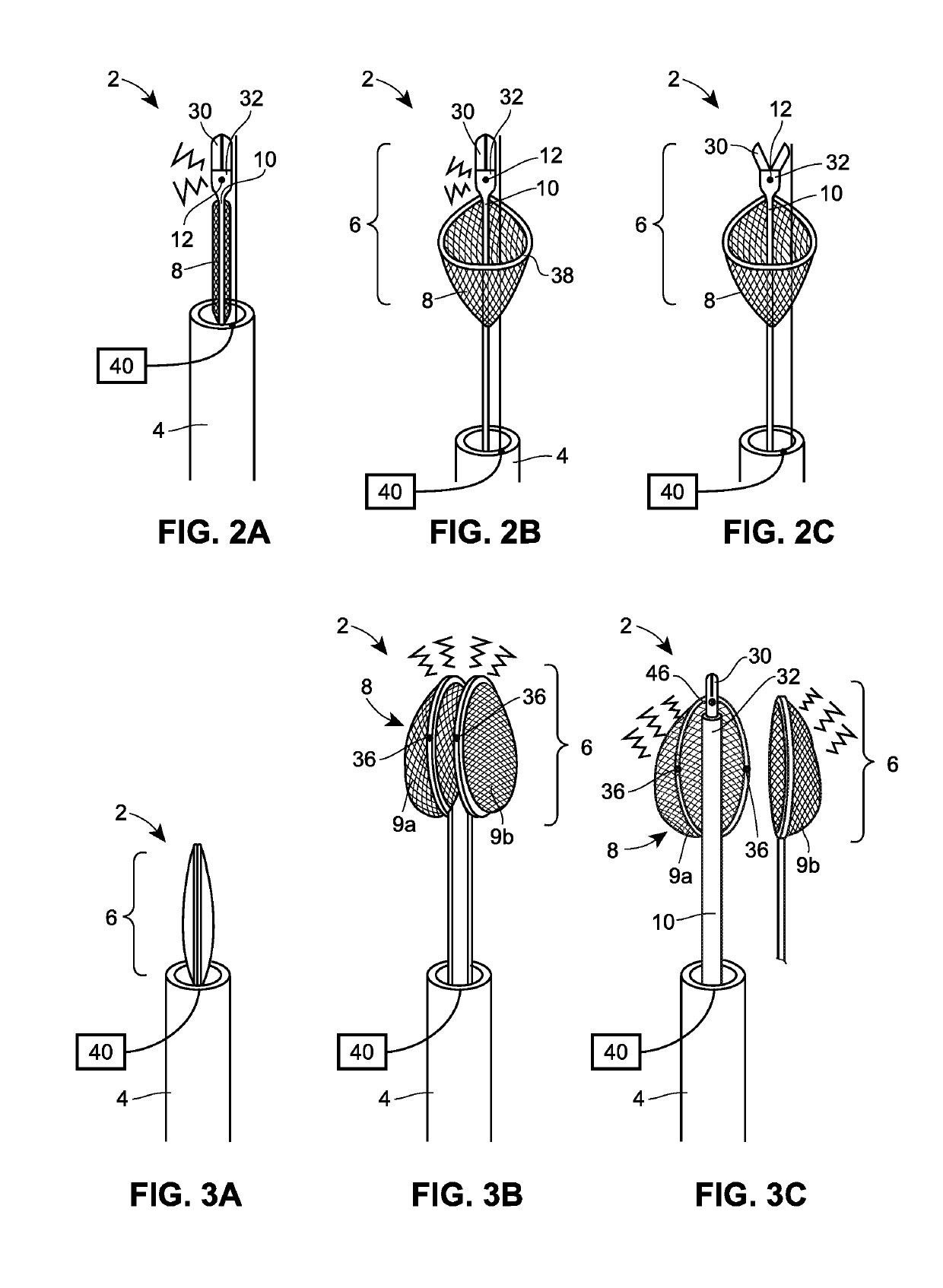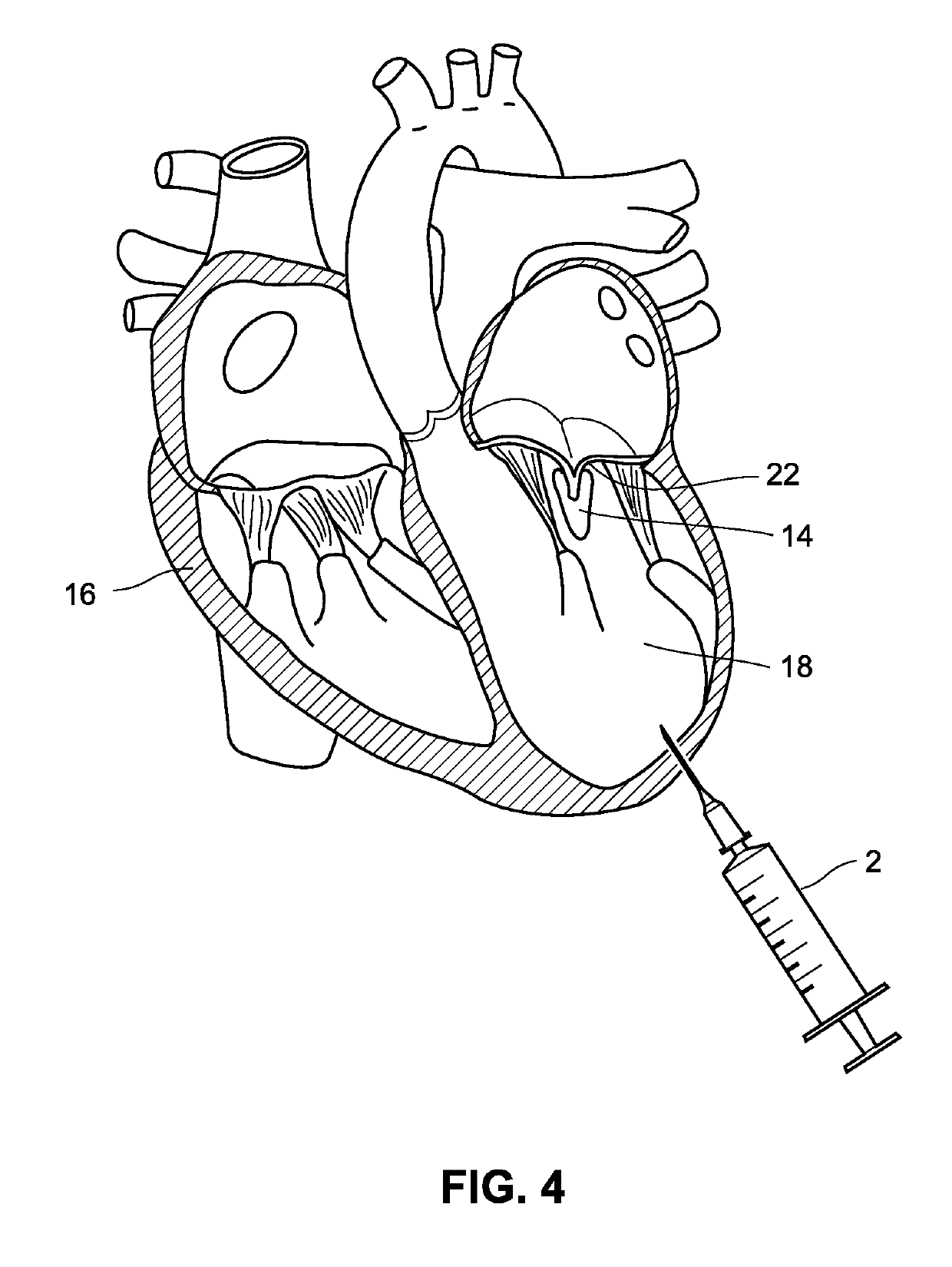Transapical removal device
a technology of a removal device and a stent, which is applied in the field of transapical removal devices, can solve the problems of swollen feet or ankles, shortness of breath and fatigue, heart murmur, etc., and achieves the effects of reducing the risk of pulmonary hypertension, and improving the effect of pulmonary hypertension
- Summary
- Abstract
- Description
- Claims
- Application Information
AI Technical Summary
Benefits of technology
Problems solved by technology
Method used
Image
Examples
Embodiment Construction
[0029]FIGS. 1A and 1B illustrate a first arrangement of a transapical removal device 2 of the present disclosure. The transapical removal device 2 includes a delivery catheter 4, a snare head 6, a snare basket 8, a spring 52, and ablation delivery catheters 10 with electrodes 12. An electrical source 42 and an ablation source 48 are in communication with the electrodes 12, and a switch 44 alternately permits and ceases to permit electrical current from the electrical source 42 to flow to the electrodes 12. In FIG. 1A, the snare head 6 and snare basket 8 are in a deployed state outside of the delivery catheter 4, and a mitral clip 14 is surrounded by the sides of the snare basket 8. The electrodes 12 of the ablation delivery catheters 10 are aligned with tissue of the heart that is to be ablated in order for the mitral clip 14 to be captured. For example, such tissue may be ablated when a control signal is provide to activate the ablation source 48 to provide an ablation signal, such...
PUM
 Login to View More
Login to View More Abstract
Description
Claims
Application Information
 Login to View More
Login to View More - R&D
- Intellectual Property
- Life Sciences
- Materials
- Tech Scout
- Unparalleled Data Quality
- Higher Quality Content
- 60% Fewer Hallucinations
Browse by: Latest US Patents, China's latest patents, Technical Efficacy Thesaurus, Application Domain, Technology Topic, Popular Technical Reports.
© 2025 PatSnap. All rights reserved.Legal|Privacy policy|Modern Slavery Act Transparency Statement|Sitemap|About US| Contact US: help@patsnap.com



